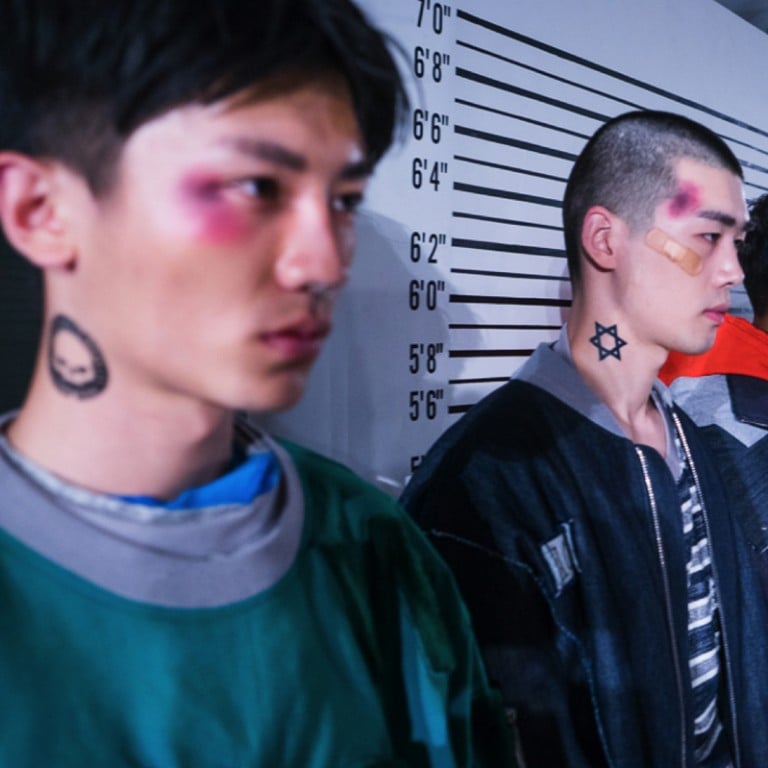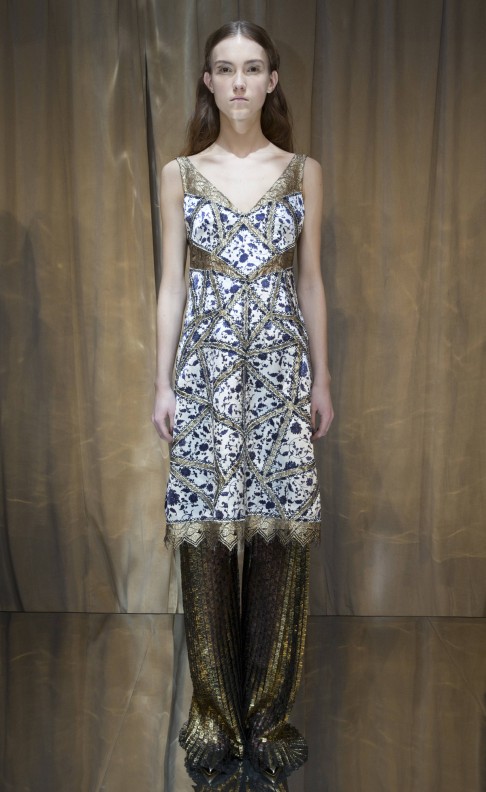How young Chinese fashion designers are making their mark in the global industry

Shenzhen-born, Central Saint Martins-trained designer Angel Chen's fashion show could have easily been mistaken as a teenage rave party. For her latest Fight Club collection, models with smudged smoky eyes and hand-applied face paint donned asymmetrical dresses, embroidered parkas and acid-coloured faux fur. The collection featured a mix of Asian subculture references from Japanese Bozusuku and Wabori gang tattoos.
At the tender age of 24, Chen has already landed prestigious stockists such as Lane Crawford, Opening Ceremony and H Lorenzo. Her contemporary interpretation of Asian aesthetics, her sheer ambition to build a global brand and her long-term vision to revitalise Chinese craftsmanship for a sustainable luxury business are shared by a new, growing legion of young independent Chinese designers who have emerged in the past few years.

"Many centuries ago, China was a market leader for all things luxurious - from silk to embroidery and jewellery. Over the past few decades, China became the world's factory," Chen says. "But that's changing. Now is a good time for young Chinese designers to launch our brands."
The rising pack, who are reimagining Chinese contemporary fashion design, include Masha Ma, Huishan Zhang and even younger labels such as Angel Chen and Shu Shu/Tong, and Feng Chen Wang, Xu Zhi and Ms Min, who recently made headlines for being shortlisted for the LVMH Prize earlier this year.
Compared to their established predecessors, such as Uma Wang and Ma Ke, the young generation of Chinese designers received an overseas education and many launched their own brands right after graduation instead of climbing the career ladder at state-owned enterprises or private corporations.

"Today, we see many more fashion graduates from London, Milan and New York returning home to start their own brands," says Tasha Liu, co-founder of prestigious concept store Dongliang, which now operates various outlets in Beijing and Shanghai.
"They are not solely looking at opening shops, but rather investing in branding through social media and other marketing tools. Their designs highlight consistency, integrity and relevance to market needs."
Lane Crawford and JOYCE Group's president, Andrew Keith, also reckons the global ambition of contemporary Chinese designers. "It is becoming difficult to categorise these designers as Chinese designers," Keith says. "Some of them live abroad and were educated abroad. They show in New York, London, Milan and Paris. They are international brands and their collections sit within a global context and in our international portfolios."


Their aesthetics, philosophy and approaches might be contemporary with a global vision, but their designs still underline their Chinese roots and references. Huishan Zhang's autumn/winter 2016 collection, for example, taps on mundane objects such as porcelain bowls.
"[Chinese culture] is something in my blood," he says. "When I [make a] reference to Chinese motifs, it's not forced. There are things that even we Chinese have forgotten to appreciate. As a young-generation Chinese designer, I want to use my own way to celebrate things like that."
Designer Shu Shu agrees: "It's common for us to make references to Chinese motifs but we don't use the motifs just for the sake of using them. We use them as inspiration to tell our story better."

Keith adds: "What's interesting about these designers is their Chinese reinterpretation of global fashion trends, with specific areas of focus such as silhouettes, juxtaposition of materials, fabrics and quirky prints."
The emergence of this new strain of contemporary designers has much to do with the changing creative environment and luxury market in China.
The creations of young designers resonate especially with a growing segment of luxury consumers who share the designers' background - born post-1980s and returning from overseas education. These consumers have developed sophisticated tastes and gathered extensive luxury shopping experiences overseas.

RTG Consulting Group has identified Generation Z - those born after 1990s - as China's next big consumer wave in its annual trend report. "The success of the country's rapid economic development has made Gen Z proud of being Chinese," says Marc Arnold, RTG's head of Intuition + Solutions divisions. "They are curious to define what being Chinese means to them and [they have the] desire to understand where Chinese culture and values stand within the larger global spectrum."
These customers are influencing the shopping behaviour of their parents' generation. "Many of our customers are just like us and they bring their parents to shop," designer Zhang says. "They are sophisticated. They'd compare my works - the craftsmanship and philosophy - with the creations of established houses such as Chanel, Givenchy and others they have already been buying. This is a huge advantage for us."

Liu agrees and adds: "This is true, but I also think the influence is mutual. We have seen customers in their 40s or 50s bring their teenage children into our shops and encouraging them to get into fashion. They are also after quality and something different."
The solid basis of customers who have moved beyond logo-maniac designs and are coveting unique creations with Chinese roots and relevances have helped the Chinese young designers prosper. What has set the foundation to connect designers to customers, however, contribute mainly to the efforts of home-grown select shops such as Dongliang and Brand New China (Beijing-based store founded in 2010 by veteran industry critic Hung Huang) and international buyer stores including Lane Crawford, JOYCE and 10 Corso Como. Lane Crawford, for example, has been running its "Created in China" project since 2013, scouting and mentoring Chinese brands such as Ms Min and Comme Moi.

"Today, the number of Chinese brands in the Lane Crawford and JOYCE portfolio has exceeded 20 across all categories," Keith says. "Whether or not we consider [these brands] as our home market, our interest lies in enabling an evolving creative culture that needs to be uncovered, explored and nurtured."
Founded by 25-year-old London College of Fashion alumni Shu Shu and Tong Tong, Shu Shu/Tong is one of the brands that have benefited from the programme. "Buyer shops and select stores have really helped in grooming young designers like us," Shu says. "We have much more exposure to customers as well as media. When we are selected by international boutiques, local shops also show interest because they trust their credibility."

Traditional department stores are also adopting a buyer system to catch up with international counterparts such as Bergdorf Goodman and Harvey Nichols. Beijing's upscale mall SKP Beijing (formerly known as Shin Kong Place) is one of the first traditional department stores to jump on the bandwagon. "Department stores today are changing because they realise the old system is starting to die out," says Zhang, whose brand is now available on the luxury floor of SKP Beijing. "They want to nurture young designers and educate clients." Even industry trade shows such as Shanghai Fashion Week are gaining international attention. Established fashion houses including Burberry, Giambattista Valli and House of Holland brought their shows to the event in the past few years.
"Of course, Shanghai Fashion Week is not perfectly mature, but it has provided a lot of opportunities for introducing Chinese fashion designers," Liu says. "Every year, the event includes something new and it has gradually built anticipation. It has become a platform where different participants can benefit from."

Founded in 2014 by London College of Fashion graduates Shu Shu and Tong Tong, the brand is now available in Lane Crawford, Brand New China boutique and Opening Ceremony. Their signature aesthetic is youthful approach of romantic feminine details.
Want more articles like this? Follow STYLE on Facebook

The emergence of this new strain of contemporary designers has much to do with the changing creative environment and luxury market in China